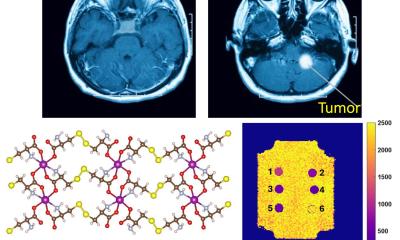RSNA 2010 Refresher course: A focus on major contrast agent issues
Mark Nicholls reports
The 90-minute refresher course ‘Contrast Agent Issues 2010: What the Experts Really Do for Allergies, Contrast-induced Nephropathy, Nephrogenic Systemic Fibrosis, and Extravasation’, to be held during this year’s Radiological Society of North America meeting, will focus on the use of iodinated and gadolinium-based contrast media and the issues, advantages and considerations for patient groups.

The use of premedication in patients at increased risk of having adverse reactions, current thinking about contrast-media induced nephrotoxicity and recent developments concerning NSF and extravasation will be examined.
In an interview with Mark Nicholls, the session leader Dr Richard Cohan, Professor of Radiology at the University of Michigan, Ann Arbor, explained: ‘We believe that all these issues are important, with nephrotoxicity and nephrogenic systemic fibrosis of particular interest at present due to a number of interesting developments. The aim is to raise awareness and suggest options for preventing adverse outcomes after contrast material is administered. Contrast material is used frequently and at high doses by radiologists throughout the world. As a result, it is imperative that radiologists and any other physicians who administer contrast agents be aware of the issues related to its use and of important recent developments.’
The specific learning objectives of the session include the utility and use of premedication in patients at increased risk of having adverse reactions to iodinated and gadolinium-based contrast media; current thinking about contrast-media induced nephrotoxicity, including the frequency with which it occurs, whether there are patients at increased risk, and whether any measures can minimize the likelihood of its developing; recent developments concerning NSF, including postulated mechanisms and the recent changes in FDA guidelines; and also a review of contrast media extravasations, in-cluding the frequency with which they occur, how often severe injuries develop, and whether there is any effective treatment.
Speakers include Dr James Ellis (University of Michigan), Dr Jeffrey Newhouse (Columbia University), Dr Jeffrey Weinreb (Yale University) and Dr Cohan.
Dr Ellis will focus on allergies, with his discussion including a review of which patients should be prepped, whether there is any cross-reactivity between gadolinium and iodinated-based agents, the effectiveness of steroids and with specific premedication regimens.
Dr Newhouse will address Contrast-Induced Nephrotoxicity (CIN), posing the question of whether it actually exists and if some patients are at greater risk, as well as looking at the effectiveness of prophylactic measures and the type of contrast-enhanced imaging to recommend for patients with varying levels of renal insufficiency.
Dr Weinreb will review the current status of NSF, which agents have been associated with the most cases, precautions that should be taken and current EMEA, American College of Radiology and FDA recommendations concerning the use of gadolinium-based contrast agents.
Dr Cohan, who is also Chair of the American College of Radiology Committee on Drugs and Contrast Media, will conclude the session on extravasation (the accidental administration of intravenously in-fused medicinal drugs into the surrounding tissue, either by leakage or direct exposure), with his talk addressing the likelihood that a serious injury will develop once an extravasation occurs and whether there is any effective treatment.
Overall, Dr Cohan said, the dose issue is complicated with respect to the use of contrast agents. While some adverse outcomes are clearly dose-related, others are not.
‘For example,’ he said ‘reducing dose is a felt to be a factor in preventing contrast induced nephrotox-icity. However, allergic reactions are not dose-related and can be triggered when even a very small volume of contrast material has been injected. ‘Yet, in comparison, in high risk patients with severe chronic kidney disease, NSF is felt to be more likely to develop in patients receiving large doses of gadolinium-based contrast material, while patients with normal renal function, who are not at high risk, can receive large doses of gadolinium-based contrast material without a problem.’
He added that with the appearance of NSF, the choice of whether to use iodinated or gadolinium-based contrast material patients with severe chronic or kidney disease or acute kidney insufficiency has become much more complicated.
28.10.2010










